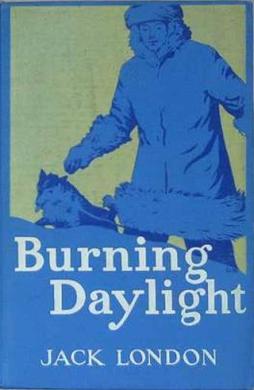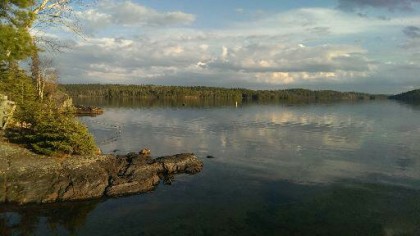Lughnasa Waning Summer Moon
Still thinking about the north. In 1969 Judy and I left Connersville, Indiana, headed toward Appleton, Wisconsin. In my mind the landscape would be pine trees, glistening lakes, deer, lots of people in plaid shirts. Maybe still a lumberjack or two. Jack London’s White Fang, Call of the Wild, Sea-Wolf, Burning Daylight had made me a distant fan of a place closer to the Arctic, one where the wildness of our planet had not been consumed by factories and roads.
 Turns out the Fox River Valley was not that place. The Fox River which runs from the Green Bay through Appleton and finally into Lake Winnebago had no available oxygen for aquatic life thanks to years of dairies and paper mills, two of the worst polluters, dumping effluent. But you could see this north from there. In the Fox River Valley it manifested itself in a tortured way through snowmobile culture and the annual ritual of the deer hunt. Both were violent and dangerous. On winter nights the lights of snowmobiles rake the roadways and countrysides as riders drive their vehicles alongside the roads from bar to bar for a shot and a beer. It was often said that grudges got settled during deer season.
Turns out the Fox River Valley was not that place. The Fox River which runs from the Green Bay through Appleton and finally into Lake Winnebago had no available oxygen for aquatic life thanks to years of dairies and paper mills, two of the worst polluters, dumping effluent. But you could see this north from there. In the Fox River Valley it manifested itself in a tortured way through snowmobile culture and the annual ritual of the deer hunt. Both were violent and dangerous. On winter nights the lights of snowmobiles rake the roadways and countrysides as riders drive their vehicles alongside the roads from bar to bar for a shot and a beer. It was often said that grudges got settled during deer season.
White Fang’s north also announced itself in the weather. That winter we had two feet of snow in one storm, an amazement to this long time Hoosier, resident of an agricultural and industrial belt that had confused seasons often with slush and ice storms in place of winter, northern winter. I learned about engine block heaters. Temperatures dropped to way, way below zero. And stayed there.
 Wisconsin was a bad experience for me. Judy and I had married at 21 and 17. I had graduated from college that spring and had no idea what to do next. So. Get married. By Appleton neither one of us were sure why we’d said yes to the other. The long winter nights found us drinking beer by the case and playing sheepshead with Judy’s family. Her father, a convinced alcoholic, and I, just getting started in my addiction, didn’t really get along. He was a snowmobile racer, a deer hunter, an ink salesman and a Packer fan. I had little interest in any of those things. Our only common ground was his daughter.
Wisconsin was a bad experience for me. Judy and I had married at 21 and 17. I had graduated from college that spring and had no idea what to do next. So. Get married. By Appleton neither one of us were sure why we’d said yes to the other. The long winter nights found us drinking beer by the case and playing sheepshead with Judy’s family. Her father, a convinced alcoholic, and I, just getting started in my addiction, didn’t really get along. He was a snowmobile racer, a deer hunter, an ink salesman and a Packer fan. I had little interest in any of those things. Our only common ground was his daughter.
By 1970 I’d found myself withering in Appleton. Too much alcohol. Judy and I had agreed on an open marriage, it was the sixties after all, but when she acted on it, I discovered I hadn’t meant it. I had three jobs in Appleton: life insurance salesman (never sold a policy, lasted three months), a baker making bread and pound cakes, but getting to work at 4 a.m for $1.50 an hour lost its charm quickly, and, finally, as a rag cutter at the Fox River Valley Paper Company. This was a distinct change from studying anthropology and philosophy, fighting the establishment. And not a good one.
Seminary took me to Minnesota, where I did find my true north, not in New Brighton, of course, but up north in the boreal forest, among the 10,000 glaciated lakes and on the shores of Lake Superior. This was Burning Daylight territory. I stayed for forty-five years.

While up north, from 1969 to 2014, I discovered the insular nature of this land. The long blue ellipse of Lake Michigan made Michigan, Wisconsin and Minnesota, the Upper Midwest, lack a through route to the West. We were not on the way to anywhere. You had to want to go up there for some reason and most folks in the U.S. chose not to. Nothing there unless you fished or hunted or had business or family. Cold, too. Brutal winters. As far north as most folks got was Detroit or Chicago.
Especially distant, especially unknown were the Upper Peninsula of Michigan, northern Wisconsin and northern Minnesota with the Iron Range, the Arrowhead region, Lake Superior, Voyageurs National Park, the BWCA, Warroad. It is a culture that has some common ground, snowmobiles, snowshoes, ice fishing, hiking, mineral extraction, cross-country skiing, but little integration even with the states in which they lie. What integration there is tends to be that of tourist destination and tourist though of course the Iron Range and the copper mines of the Keweenaw, the laker supported transport of the Great Lakes, and such cities as Duluth, Superior, Sault St. Marie, and Marquette attract citizens as well as visitors.
Now living in a region dominated by the story of the vanishing frontier, the Indian wars, the cowboy, mountains, and the false allure of unbridled freedom, the north country has receded from view again. It is far away, not on the way to anywhere most choose to go, and largely unknown. Yet it still feeds my imagination and my memories there are warm and many. No, I never mushed a dogsled to take medicine to a plague ridden village isolated by a blizzard (Sergeant Renfrew of the Canadian Mounted Police), but I did mush a dogsled. I never caught a muskie or a lake trout, but I did spend many happy hours picking blueberries in the late August sun. It was the north of my Jack London induced fantasy and I loved it. As I now do the Rockies.
